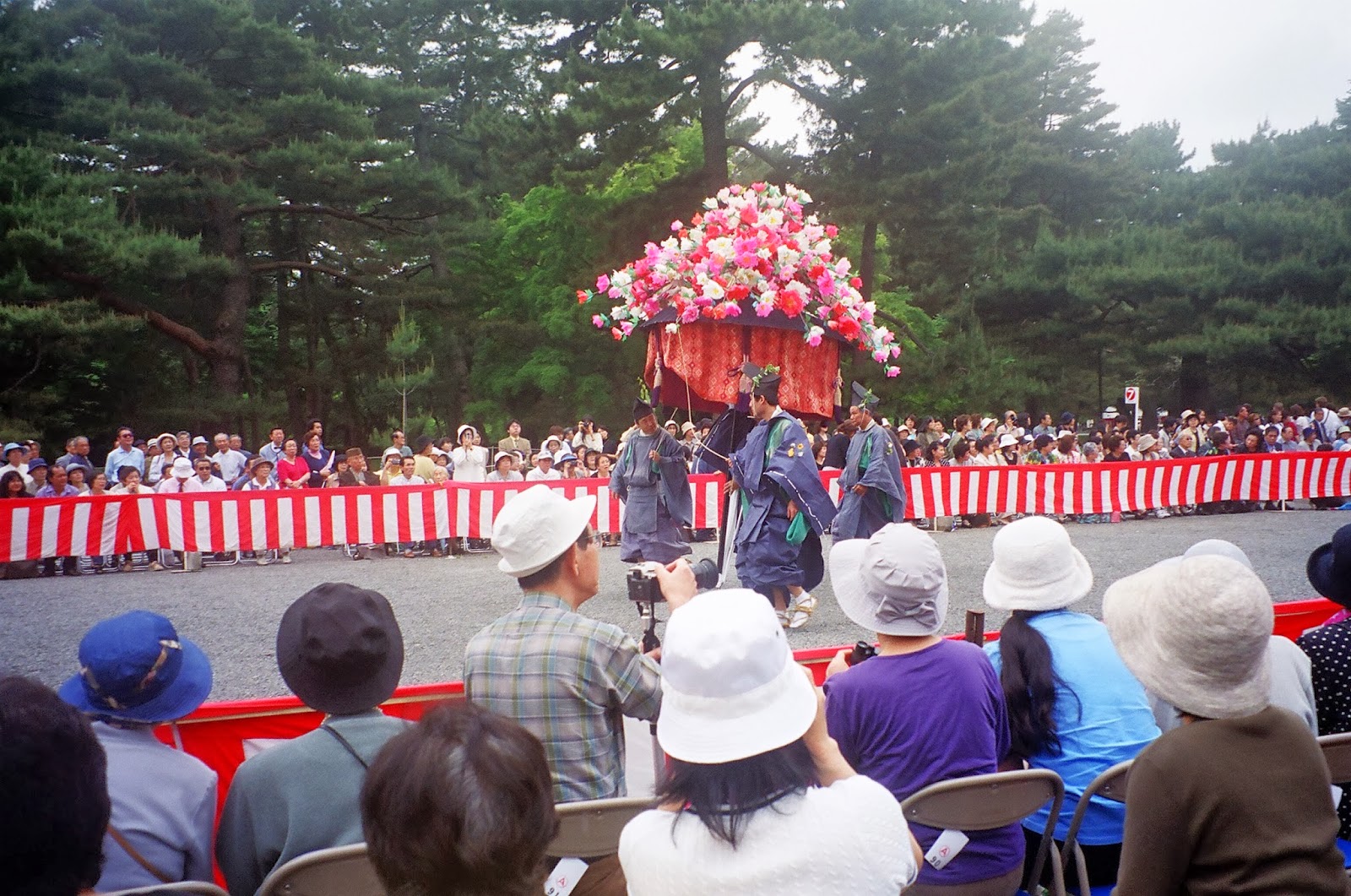The main event is the grand procession, which we had booked in to see, although there are other events going on such as an archery display on horseback at the Shimogamo Shrine and a horse race between two teams dressed in 8th c costumes at the Kamigamo Shrine.
The Aoi Matsuri festival procession is made up of two parts: the Imperial Messenger’s retinue and that of the Saio-dai, a young woman who is the focus of the parade. It is traditionally celebrated on the 15th May.
The Imperial Messenger’s procession consists of a carriage pulled by oxen, flowered umbrellas, courtiers and court ladies dressed in costumes of noble court life during the Heian period (794-1185). In Heian times the Saio-dai was always an imperial princess. She rides on a palanquin and is dressed in imperial Heian robes of 12 layers. (I had found an interesting video showing how these heavy robes are worn but the link is broken. Maybe one day I'll happen upon another.) The colourful retinue of followers (some 600 participants) also wear costumes of the imperial court; all decorated in some way with the hollyhock leaf. The parade proceeds from the Imperial Palace to Shimoganmo Shrine and then on to Kamigamo Shrine where final ritual ceremonies take place. In terms of manners and customs, this parade is certainly a colourful reminder of ancient traditions.
We saw the parade from a vantage point near the Imperial Palace (1855) considered central Kyoto, once a walled district dating from the 16th c. The Palace’s original structure dates from 794, but fire and earthquake has seen it demolished on occasions. Enthronement ceremonies and state functions are still held here. The Palace is surrounded by a beautiful park and after the parade had snaked its way passed us, we strolled along its perimeter to look for cherry blossom remnants which were quickly disintegrating in the rain.
 |
| Imperial Palace |
 |
| Tree art |
On the way back we walked over the Kamogawa River, said to have exceptional waters for setting dyes. Sadly, the rain set in so we didn’t get to the antique district with its speciality textile & craft shops. Another day perhaps!









